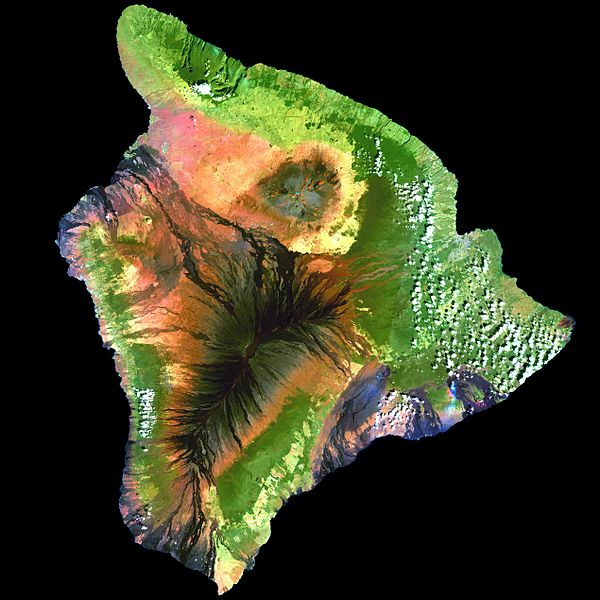Fasciculus:Island of Hawai'i - Landsat mosaic.jpg

Mensura huius perspectionis: 600 × 600 elementa imaginalia. Aliae mensurae: 240 × 240 elementa imaginalia | 480 × 480 elementa imaginalia | 768 × 768 elementa imaginalia | 1 024 × 1 024 elementa imaginalia | 2 048 × 2 048 elementa imaginalia | 5 076 × 5 076 elementa imaginalia.
Sua resolutio (5 076 × 5 076 elementa imaginalia, magnitudo fasciculi: 5.19 megaocteti, typus MIME: image/jpeg)
Historia fasciculi
Presso die vel tempore fasciculum videbis, sicut tunc temporis apparuit.
| Dies/Tempus | Minutio | Dimensiones | Usor | Sententia | |
|---|---|---|---|---|---|
| recentissima | 11:59, 1 Septembris 2009 |  | 5 076 × 5 076 (5.19 megaocteti) | Túrelio | saved with 95% quality (low compression), but without "progressive" option |
| 11:59, 1 Septembris 2009 |  | 5 076 × 5 076 (4.9 megaocteti) | Bidgee | Fix thumbnail generation issue caused by progressive loading. | |
| 11:31, 1 Septembris 2009 |  | 5 076 × 5 076 (4.91 megaocteti) | Rocket000 | reuploading | |
| 11:52, 27 Decembris 2007 |  | 5 076 × 5 076 (4.91 megaocteti) | Avenue | {{Information| |Description=This simulated true-color image of the island of Hawai'i was derived from data gathered by the Enhanced Thematic Mapper plus (ETM+) on the Landsat 7 satellite between 1999 and 2001. |Source=[http://veimages.gsfc.nasa.gov/2712/l |
Nexus ad fasciculum
Ad hunc fasciculum nectit:
Usus fasciculi per inceptus Vicimediorum
Quae incepta Vici fasciculo utuntur:
- Usus in af.wikipedia.org
- Usus in ar.wikipedia.org
- Usus in ast.wikipedia.org
- Usus in az.wikipedia.org
- Usus in be.wikipedia.org
- Usus in bn.wikipedia.org
- Usus in br.wikipedia.org
- Usus in ca.wikipedia.org
- Usus in ceb.wikipedia.org
- Usus in cy.wikipedia.org
- Usus in de.wikipedia.org
- Usus in de.wikivoyage.org
- Usus in en.wikipedia.org
- Hawaii (island)
- Mauna Loa
- Landsat program
- Geoinformatics
- Puna, Hawaii
- User:Spikebrennan
- Portal:Hawaii/Selected article
- Portal:Hawaii/Selected article/11
- Wikipedia:Featured picture candidates/February-2008
- Wikipedia:Featured picture candidates/Big Island of Hawai'i
- User:Hawaiian Mafia
- User:Aoi/sandbox
- Usus in es.wikipedia.org
- Usus in es.wikibooks.org
- Usus in eu.wikipedia.org
- Usus in fa.wikipedia.org
- Usus in fr.wikipedia.org
- Usus in fr.wikivoyage.org
- Usus in ga.wikipedia.org
- Usus in haw.wikipedia.org
- Usus in he.wikipedia.org
- Usus in hi.wikipedia.org
- Usus in hu.wikipedia.org
- Usus in ia.wikipedia.org
- Usus in id.wikipedia.org
- Usus in incubator.wikimedia.org
- Usus in is.wikipedia.org
- Usus in ja.wikipedia.org
View more global usage of this file.
